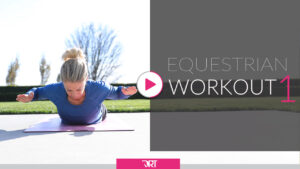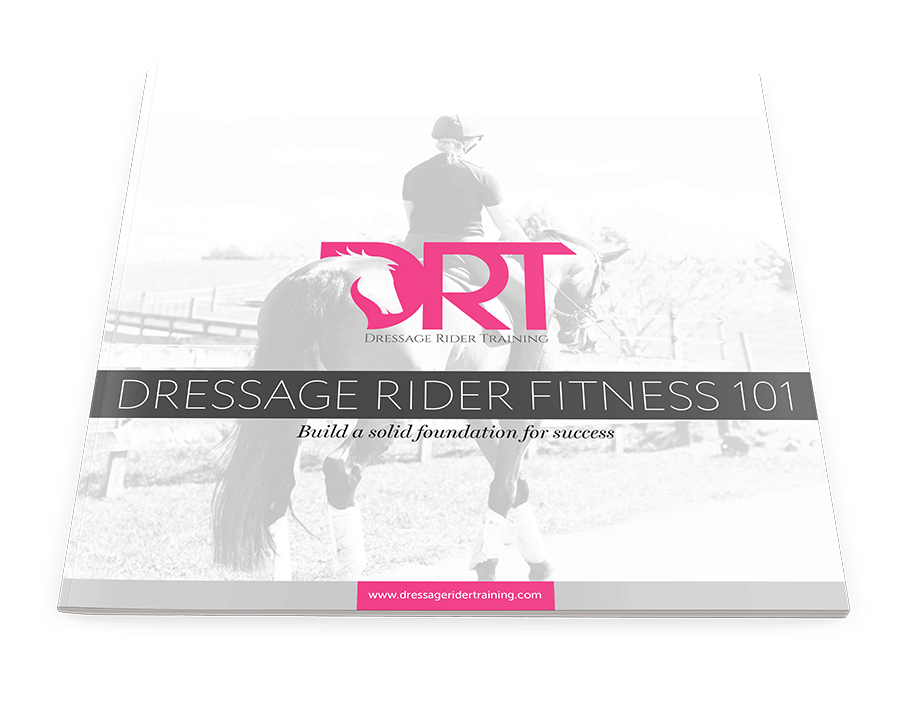How to apply the dressage scale of training to your training at home
Learn how to apply the scale of training to your weekly schooling sessions with your horse.
Dressage is a type of equestrian sport involving the rider guiding their horse through a series of elegant and controlled movements. Dressage aims to make the horse more supple, obedient, and responsive to the rider’s commands. One of the most important concepts in dressage is the scale of training, which provides a framework for developing the horse’s physical and mental abilities. Here’s how you can apply the dressage scale of training to your training at home in a way that’s easy to understand.
The pyramid of training also known as the scale of training is divided into six levels, which are listed in order of importance. The first level is rhythm, which refers to the horse’s regularity of movement. The second level is relaxation, which involves the horse’s ability to maintain a calm and supple state. The third level is contact, which refers to the horse’s acceptance of the bit and the rider’s aids. The fourth level is impulsion, which involves the horse’s energy and forward movement. The fifth level is straightness, which refers to the horse’s ability to travel in a straight line without losing balance or impulsion. The final level is collection, which involves the horse’s ability to maintain balance and impulsion while carrying more weight on their hindquarters.

Now, let’s break down each level of the pyramid and discuss how you can apply it to your training at home.
Rhythm:
Rhythm is the foundation of the pyramid of training, and it refers to the horse’s regularity of movement. When you’re riding your horse, pay attention to their rhythm and make sure that it’s consistent. If your horse is moving too quickly or too slowly, you’ll need to adjust your aids to help them maintain a steady rhythm. You can also use ground poles or cones to help your horse develop a consistent rhythm.
Relaxation:
The second level of the pyramid is relaxation, which involves the horse’s ability to maintain a calm and supple state. A relaxed horse is more willing to work and less likely to become tense or resistant. To help your horse relax, start your ride with a long, loose rein and allow them to move freely. Use gentle, rhythmic aids to encourage your horse to stretch and flex their muscles. You can also incorporate stretching exercises into your warm-up routine.
Contact:
Contact refers to the horse’s acceptance of the bit and the rider’s aids. When your horse is accepting the bit, they’ll be more responsive to your aids and more willing to work. To establish a good contact, start by holding the reins lightly and using a gentle, steady pressure. Avoid pulling on the reins or jerking the horse’s mouth. As your horse becomes more comfortable with the bit, you can gradually increase the contact.
Impulsion:
The fourth level of the pyramid is impulsion, which involves the horse’s energy and forward movement. A horse with good impulsion will be energetic and forward-moving without becoming tense or rushed. To develop impulsion, use your legs and seat to encourage your horse to move forward. You can also use exercises such as transitions, circles, and lateral movements to help your horse engage their hindquarters and develop more impulsion.
Straightness:
Straightness refers to the horse’s ability to travel in a straight line without losing balance or impulsion. A horse that’s straight will be easier to ride and more responsive to your aids. To help your horse maintain straightness, use your aids to guide them along a straight line. You can also use ground poles or cones to create a visual guide for your horse.
Collection:
The final level of the pyramid is collection, which involves the horse’s ability to maintain balance and impulsion while carrying more weight on their hindquarters. Collection is the most advanced level of the pyramid, and it takes time and patience to achieve. To develop collection, you’ll need to work on your horse’s strength and balance, as well as their obedience to your aids. You can do this by using exercises such as shoulder-in, haunches-in, and half-passes to encourage your horse to engage their hindquarters and shift their weight back. You can also use transitions within and between gaits to help your horse develop the ability to carry themselves more uphill.
It’s important to remember that each level of the pyramid builds upon the previous level, and that you can’t skip any levels if you want to achieve true collection. You’ll need to work on each level consistently and methodically, taking the time to build a strong foundation before moving on to more advanced exercises.
When working on the pyramid of training at home, it’s important to be patient and take things slowly. Don’t rush your horse or try to force them into a particular frame or position. Instead, focus on building their strength and suppleness gradually over time. Use positive reinforcement techniques such as praise and rewards to encourage your horse to work willingly and happily.
In conclusion, the dressage pyramid of training provides a valuable framework for developing your horse’s physical and mental abilities. By focusing on each level of the pyramid in turn, you can help your horse become more supple, obedient, and responsive to your aids.
Remember to be patient and consistent and always to put your horse’s welfare first.
You can achieve great things with your horse in the arena and beyond with dedication and hard work.
Want to learn more about dressage and the scale of training, check out these article
What is the Dressage Pyramid of Training
What Is Dressage And How Do You Get Started
Want more FREE articles to help you with your dressage rider training? Try these out?
What is dressage and how do I get started
Dressage Rider Exercises For Improved Fitness
Dressage Rider Leg Strength & 6 Exercises To Help You Improve
Dressage Rider Exercises For Improved Fitness
Upper Body Exercises For Dressage Riders
Horse training exercises using the pyramid of training
We have created a simple training system with our sister site Dressage Horse Training that is built upon the training scale.
Learn how to structure your weekly training and see it applied to various horses from young green broke, through to Grand Prix.
Get the exercises and guidance from a proven training system professional riders use. Learn how to overcome training errors, teach your horse new movements and develop yourself into a confident dressage rider.
The secret to success is following a simple and proven system. So whether you are figuring out how to get started with dressage or a more advanced competitive rider, we cover everything you need to help you with your training at home. No matter where in the world you are based.
Learn how to master the art of dressage horse training, improve your dressage scores and make dressage easier to master.
To get started, check out these articles
How to get started with dressage
How to structure your dressage training for your horse
What is a dressage competition
Dressage Rider Training Program
Join other participants on our 12-week 'step-by-step' online rider
training program. Improve the 5 components of your riding.
Only available 3x per year.
see full details & register your interest







